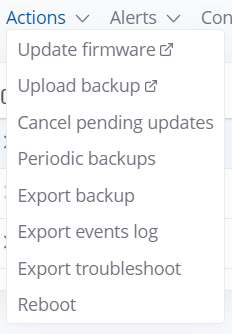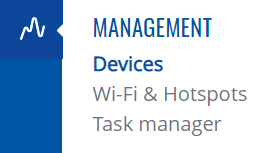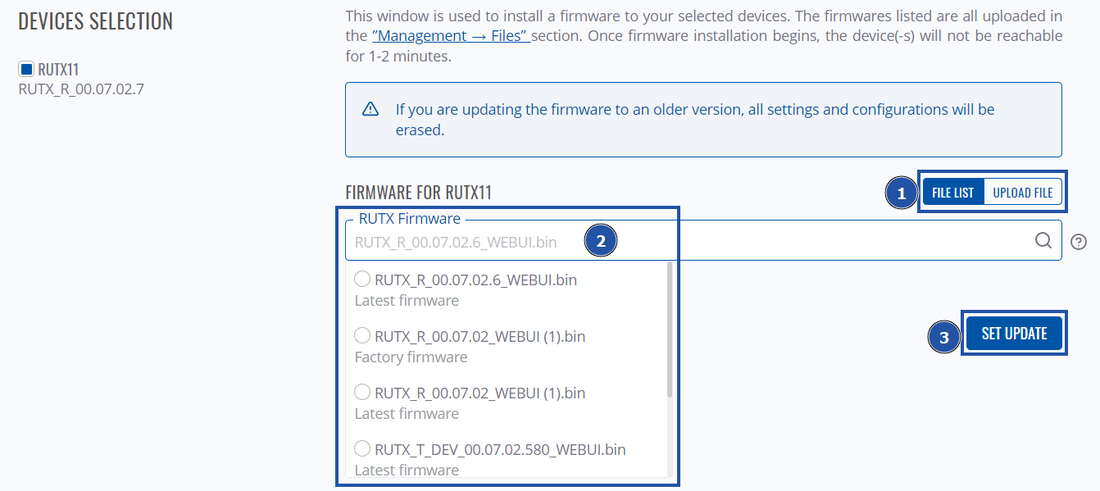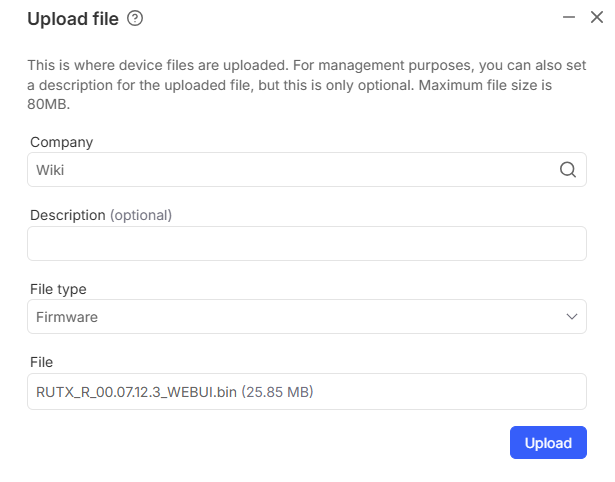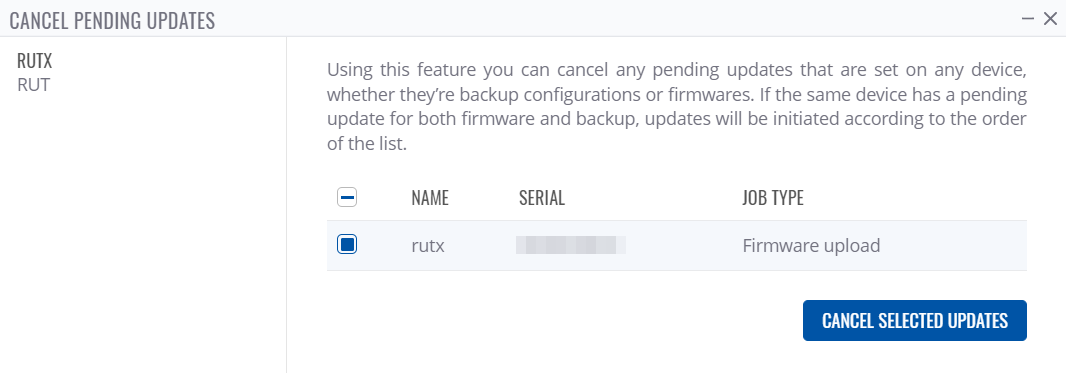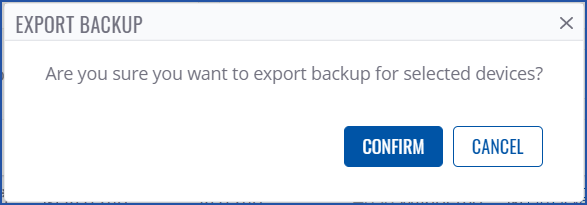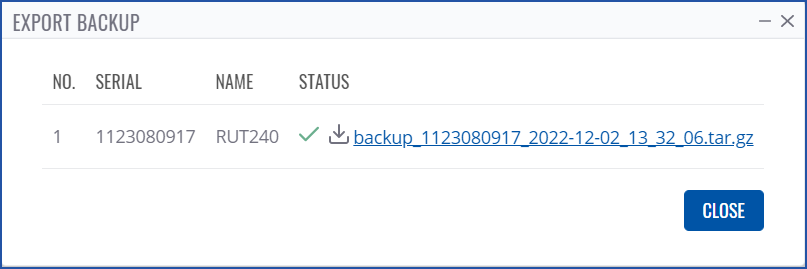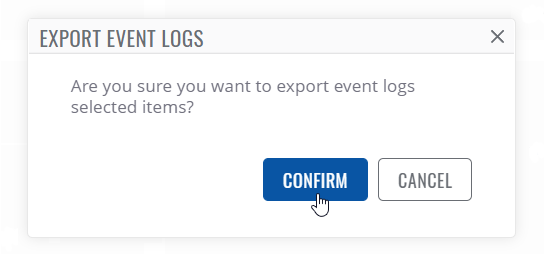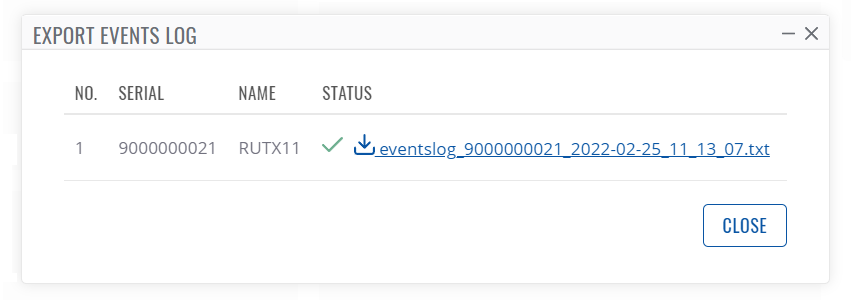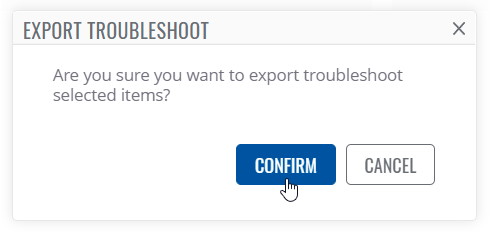RMS Actions menu: Difference between revisions
No edit summary |
|||
| (One intermediate revision by the same user not shown) | |||
| Line 1: | Line 1: | ||
==Summary== | ==Summary== | ||
The '''Actions''' top control menu is located in the '''[[ | The '''Actions''' top control menu is located in the '''[[RMS_Devices|Devices]]''' section. It can be used to update firmware, manage delayed tasks, update device information, set up remote access to devices connected to your router's LAN, manage password and reboot devices registered on your RMS profile. This section of the RMS user manual provides an overview of the functions of the Actions submenu. | ||
[[File:Rmsdevices8.png|border|class=tlt-border]] | [[File:Rmsdevices8.png|border|class=tlt-border]] | ||
Latest revision as of 14:59, 11 January 2023
Main Page > IoT Platforms > RMS > RMS Manual > RMS Management > RMS Devices > RMS Actions menuSummary
The Actions top control menu is located in the Devices section. It can be used to update firmware, manage delayed tasks, update device information, set up remote access to devices connected to your router's LAN, manage password and reboot devices registered on your RMS profile. This section of the RMS user manual provides an overview of the functions of the Actions submenu.
Update firmware
To Update firmware firmware for device(s) selected from your device table go to the RMS web page, Left sidebar panel, (Management → Devices) and select desired devices.
Move your mouse pointer to the Top control Actions menu and select Update firmware (Actions → Update firmware).
You'll be redirected to this window:
- Choose whether update from the file list or upload new firmware.
- If you chose from File List, here you'll get to choose file, alternatively, if you chose to upload, you'll get an upload button instead.
- Set Update
- Additionally, you also have the option to keep settings when updating.
Step by step instructions
Read step by step instructions to learn how to update firmware for your device(s).
- Select the device(s) that you wish to update.
- Move your mouse pointer to the Actions menu and click "Update firmware".
- After a pop-up window will appear. Select the Latest or Factory firmware from the top of the list. You also can select the firmware you have previously uploaded.
- Click the Set update button, you will get a pop-up window showing the firmware upload progress.
- After the firmware upload has complete in the Status column you will you will get a message: ✔ Successfully updated firmware.
- You can safely close the pop-up window by clicking Close button.
Important!
- Allow some time for your device(s) to update. They won't be reachable for up to 1-2 minute(s).
- When the device(s) goes from Offline(⬤) to Online(⬤), the device(s) have been updated and now are fully operational.
Your device(s) will be unreachable for a few minutes and will thus be shown as "Offline". The power button symbols located next to each device in the device table indicate the monitoring status of these devices. When it turns green, the firmware updates will have finished and the device(s) will be seen as "Online" in RMS.
Note: If you update an offline device, it will have a Pending status (⬤) until it comes back Online(⬤) after which it will be updated.
Upload firmware
Firmware files can be uploaded to RMS via the Files page. You can download firmware for different devices from here.
Alternatively, you can upload the firmware using the Update Firmware option.

Upload backup
 Using this menu option, you can upload backups to the selected devices either from the RMS file list or by uploading a new backup to RMS via the upload file option.
Additionally, backup files can be uploaded to RMS via the Files page.
Using this menu option, you can upload backups to the selected devices either from the RMS file list or by uploading a new backup to RMS via the upload file option.
Additionally, backup files can be uploaded to RMS via the Files page.
Cancel pending updates
The Cancel pending updates allows you to cancel any pending firmware or configuration updates for offline devices. Cancel updates provides an option to manage all the pending jobs. To access it go to the RMS web page, Left sidebar panel, (Management → Devices) and click on Devices submenu.
Move your mouse pointer to the Top control Actions menu and select Cancel pending updates (Actions → Cancel pending updates).
Step by step instructions
Read step by step instructions to learn how to cancel pending updates.
- Move your mouse pointer to the Actions menu and click "Cancel pending updates".
- After a pop-up window will appear. Select the the actions you want to cancel.
- Click the Cancel selected updates button.
- You can safely close the pop-up window.
At the top of your screen, you will get a notification:
Periodic backups
This feature lets you do backups periodically on selected devices.
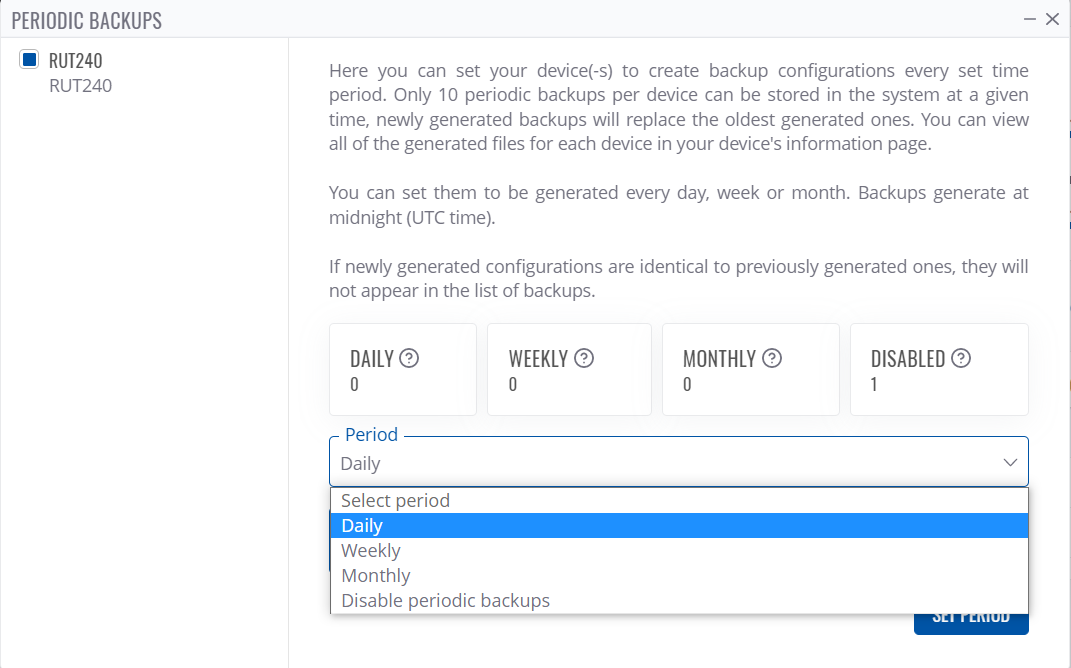
- Here, you'll be able to choose period of backups - daily, weekly, monthly or none at all.
- After choosing, you'll see when the next backup will be made.
- Set Period
Export Backup
The Backup is used to download configuration files for your selected device(s). Backup files can be uploaded only to identical devices with identical firmware. Once a backup file is uploaded to a router, that router will have an identical configuration as the router from which the backup file originated (was downloaded from).
To export backup from your devices go to the RMS web page, Left sidebar panel, (Management → Devices) and click on Devices submenu.
Move your mouse pointer to the Top control Actions menu and select Export Backup.
The Export Backup function provides you with the possibility to download configuration files from devices registered on your RMS profile.
Instructions
- Select the device(s) whose configuration file(s) you would like to download.
- You can select multiple devices.
- Move your mouse pointer to the Actions menu and click Export backup.
- Click the Confirm button.
- You will get a pop-up box that displays your selected device(s). In the Status column, click the link to download configuration files.
Useful
- You can easily download backup files by clicking the file link.
- You will be able to access and redownload the generated backup configuration(-s) anytime in Management → Files or in each device's details.
Export Event logs
The Event Logs is used to download the event logs for your selected device(s). The Events Log windows display records of such events like logins, reboots, resets, connections, configuration changes, and more.
To download event logs for your devices go to the RMS web page, Left sidebar panel, (Management → Devices) and click on Devices submenu.
Move your mouse pointer to the Top control Actions menu and select Export event logs.
The Export event logs function is used to download the event log files from the selected device(s).
Instructions
- Select a device(s) whose events log file(s) you would like to download.
- Move your mouse pointer to the Actions menu and click Export event logs.
- You will get a confirmation pop-up window.
- Click the Confirm button.
- In the Status column click the link to download event log files.
Useful
- You can easily download event logs by clicking the file link.
- You will be able to access and redownload the generated event logs(-s) anytime in Management → Files or in each device's details.
Export Troubleshoot
The Troubleshoot is used to download troubleshoot file for your selected device(s). Troubleshoot file - downloadable archive, that contains full router configuration and all System log files.
To download troubleshoot file for your devices go to the RMS web page, Left sidebar panel, (Management → Devices) and click on Devices submenu.
Move your mouse pointer to the Top control Actions menu and select Export Troubleshoot.
The Export Troubleshoot function is used to download the troubleshoot file from the selected device(s).
Step by step Instructions
- Select device(s) for which troubleshoot file(s) you would like to download.
- Move your mouse pointer to the Actions menu and click Export Troubleshoot.
- You will get a confirmation pop-up window.
- Click the Confirm button.
- In the Status column click the link to download troubleshoot files.
Useful
- You can easily download troubleshoot by clicking the file link.
- You will be able to access and redownload the troubleshot(-s) anytime in Management → Files or in each device's details.
Reboot
To Reboot device(s) selected from your device table go to the RMS web page, Left sidebar panel, (Management → Devices) and click on Devices submenu.
Move your mouse pointer to the Top control Actions menu and select Reboot (Actions → Reboot).
The Reboot function is used to reboot devices selected from your device table.

Instructions
- Select the device(s) that you wish to reboot.
- Move your mouse pointer to the Actions menu and click Reboot.
- You will get a pop-up asking whether you really want to reboot the selected device(s). If you're ready to proceed, click Confirm.
- The next pop-up box will display the status of each device.
If the reboot is successful in the Status column you will you will get a message:✔ Successfully Rebooted device.
Important!
- Your device(s) will be unreachable for a few minutes and shown as (Offline) in RMS.
- When the ⬤ red circle (Offline) will change to ⬤ green circle (Online) the device(s) have been rebooted and now are fully operational.

